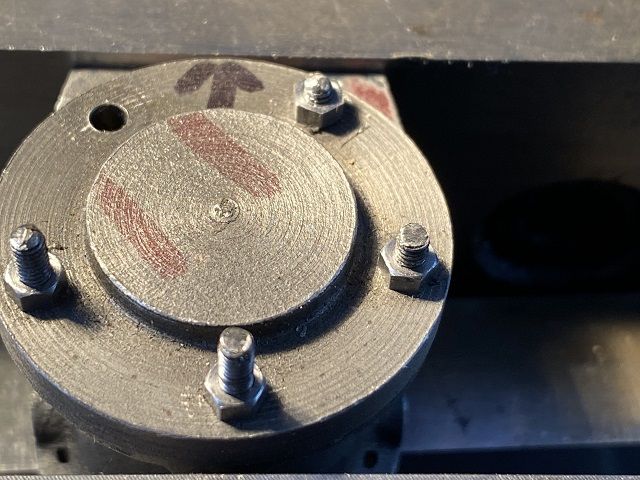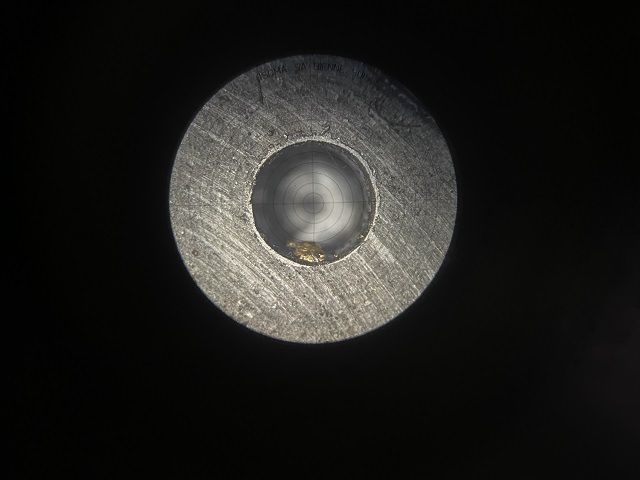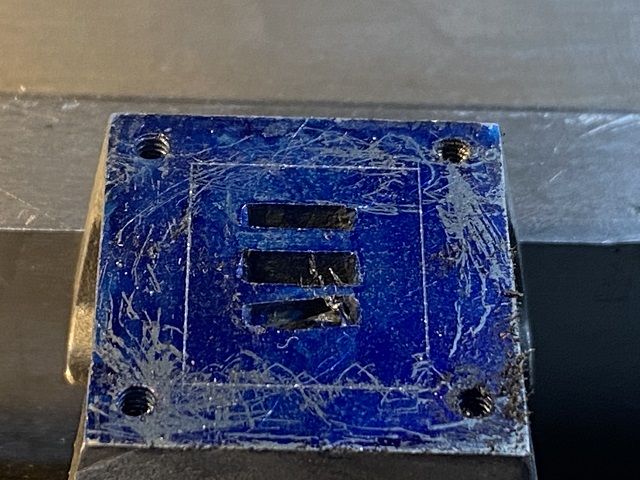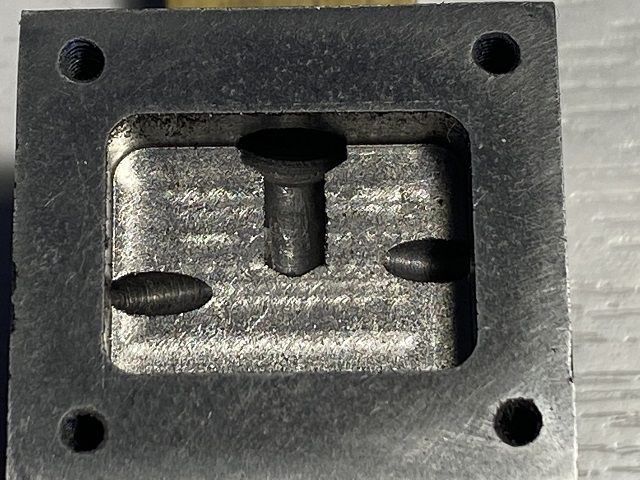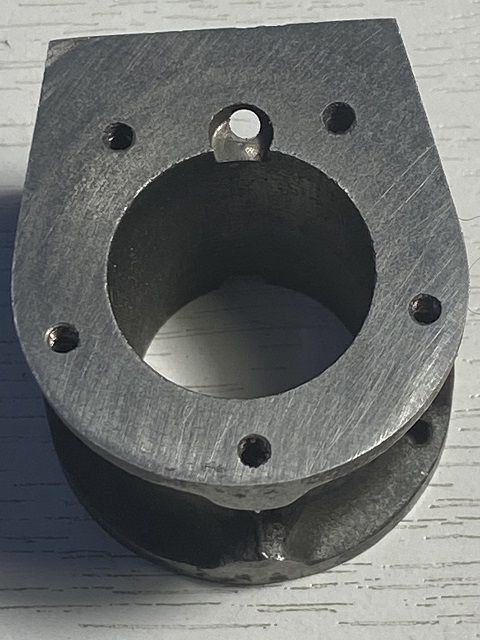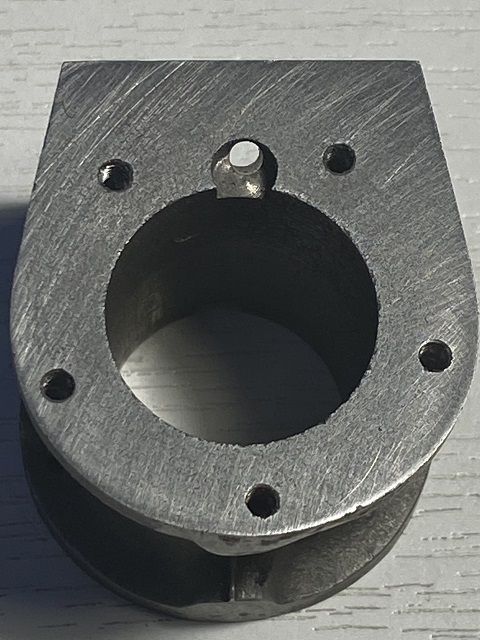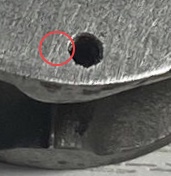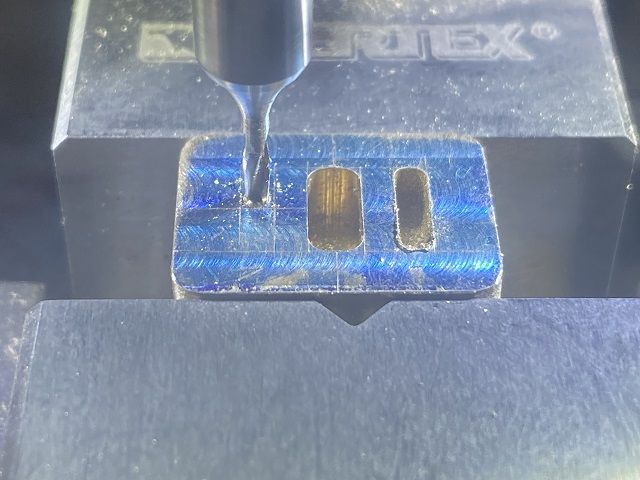Well I opted to mill out the poorly formed ports. In order to do this I needed to remove the studs the previous builder had fitted for the top and bottom covers in order to mount in the vice.
The studs decided to fight back. Well one of them did. Five on the upper cover end came out easily. Four of the lower ones came out relatively easily. The last one fought back and said no way am I leaving this casting in one piece and promptly sheared flush wit the top of lower face. Bugger I thought. . I actually said something worse.
. I actually said something worse.
I knew drilling it out would be fraught as it needed a 2mm tapping drill size and if this wandered being such a thin drill it would go down the casting in preference to the stud.
I set it up in the vice and refitted and bolted the top cover down.

This now gave me a fixed location. I then used my centering scope for the first time in anger to locate on the hole in the cover.

Once located i remove the top cover and the studs. Fitted a 2mm slot mill and very gingerly raised the table to bring cutter and stud together. Ran at approx 1500rpm and worked my way through the stud. Once remnants cleared out was able to run 7BA tap back down the hole. That was quite a relief.
Blued up the port face on the cylinder and lightly scribed a box around the area to be milled out. This was my sanity check to ensure I had my DRO settings correct. Clamped in vice and set level and set up a 3/16 slot mill.

Initially put in four corner holes at 1/8" depth, then reduced the DOC to 1/16" and milled out first layer. Dropped down to the 1/8" point and took out another layer. I was hoping to get away with this but needed another 1/16". Looked good at this point so them went round the periphery with a full depth cut removing final/1/64" all round.

Pleased with that now need to make the brass insert.
I have never used JBWeld before so am not sure how much smaller I need to make the brass insert. I assume I need the JBWeld as thin as possible. Is it fairly thin as soon as it is mixed. I was think that when the brass insert is pushed into place to use, either flypress or arbor press to push it as fully home as possible.
Colin
Jim K.


